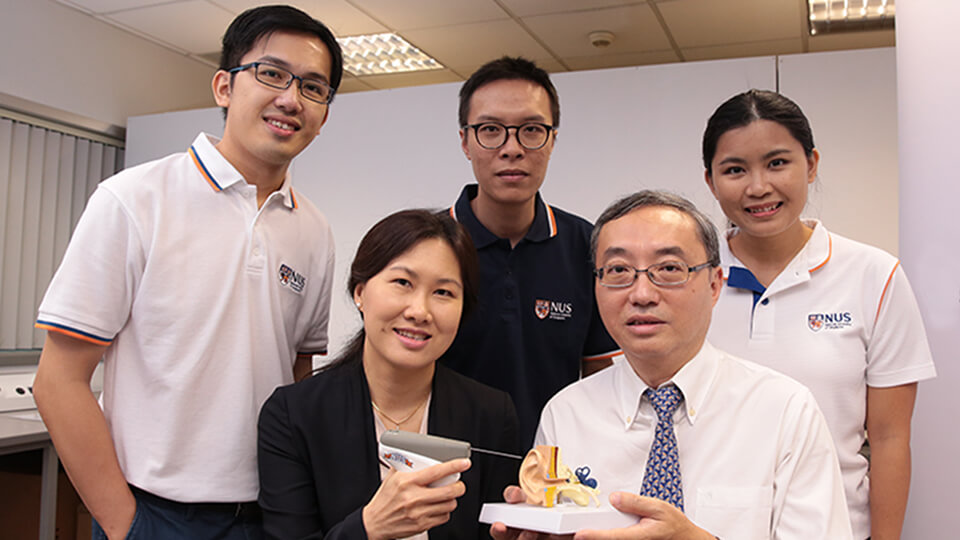Researchers from the National University of Singapore (NUS) has developed a novel handheld device, known as CLiKX, for the treatment of a condition called Otitis Media with Effusion (OME), or ‘glue ear’.
OME is the leading cause of hearing loss and visits to the doctors among children worldwide. This NUS invention, which is sensor-guided and easy to use, could significantly improve current surgical treatment of the condition, according to a statement released on May 24, 2017.
OME is a condition where the middle ear becomes filled with fluid instead of air. If left untreated, patients may suffer a series of life-altering complications. These include hearing impairment, middle ear bone erosion or tumour, and brain infection.
OME has also been shown to cause delays in the speech, language and academic abilities of young children. Around the world, there are about 709 million cases of acute OME annually, of which about 90 per cent occurs in children.
CLiKX was specially designed to improve on the surgical treatment of OME. The device was pioneered by a team led by Associate Professor Tan Kok Kiong from the Department of Electrical and Computer Engineering at the NUS Faculty of Engineering, together with Dr Lynne Lim, an Adjunct Associate Professor with the Department of Otolaryngology at the NUS Yong Loo Lin School of Medicine and Senior Ear Nose and Throat (ENT) Consultant at Mount Elizabeth Medical Centre.
“CLiKX can potentially shift the current standard surgical procedures for OME,” said Assoc Prof Tan. “With this pistol-like applicator, the grommet tube can be easily inserted into a patient’s ear within a single click. In less than a second, the procedure is done.”
“With this simple procedure, we expect costs, manpower and resources to be lowered substantially,” added Assoc Prof Tan. The research team aims to conduct the first-in-man trial in Singapore in 2018, and aim to launch the device in the market by 2020.



